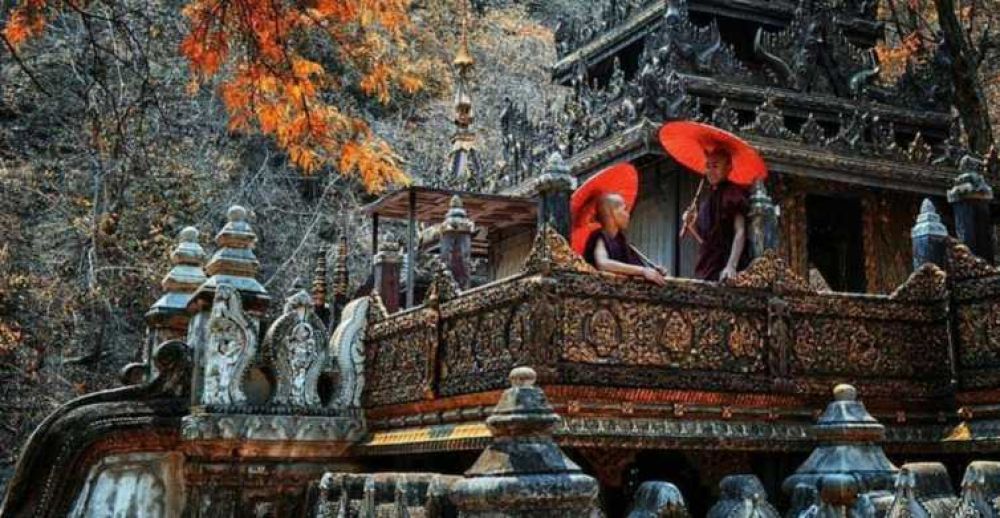

Shwenandaw Monastery, also known as the Golden Palace Monastery, stands as one of the most significant historic and religious landmarks in Mandalay, Myanmar. This beautifully intricate wooden monastery is renowned for its exquisite wood carvings and is considered a superb example of traditional 19th-century Burmese teak architecture.
Originally part of the royal palace at Amarapura, it was relocated to Mandalay in 1857 by King Mindon, who used it not only as a place of worship but also as his personal apartment. After the king's death, his son, King Thibaw, believed the monastery to be haunted and had it dismantled and moved to its present site in 1880.
What makes Shwenandaw Monastery unique is that it is one of the few structures that give us a glimpse into the traditional royal palace's grandeur. Most of the original complex was destroyed during World War II, but Shwenandaw Monastery survived, providing visitors with a unique window into Myanmar's past.
Tourism at Shwenandaw Monastery has seen a gradual increase over the years, particularly after Myanmar's political climate began to open up in the early 2010s. Although recent years have seen challenges that affected Myanmar tourism overall, the monastery remains a must-visit location for those who make it to Mandalay.
Visitors are drawn to the site not only for its historical significance but also for the opportunity to see monks who still use part of the monastery as a place of worship and study. This provides a rare chance to witness traditional Buddhist practices in an authentic setting.
In terms of the latest tourism trends, sustainable and responsible tourism has become increasingly important at Shwenandaw Monastery, with efforts being made to preserve the site while accommodating tourists. Further, experiential travel has gained popularity, with tourists looking for authentic experiences and deeper insight into Myanmar's culture and history through guided tours and interaction with local communities.
Due to the delicate nature of the monastery's wood carvings and the importance of cultural preservation, visitors are encouraged to be mindful of their impact on the site. Photography is allowed, but it must be done respectfully, and touching the carvings is prohibited to prevent damage.
The future of tourism in Shwenandaw Monastery is tied to the broader context of Myanmar travel, and developments are being closely watched by those within the tourism industry. Nonetheless, for those who visit, the monastery remains a precious cultural treasure and a profound reminder of Myanmar's rich heritage.
When planning a visit, it is recommended to check with local sources for any updates regarding access and opening hours, as these can change due to various factors like restoration projects and national holidays. Additionally, hiring a knowledgeable local guide can greatly enhance the experience, offering deeper insight into the monastery's history and relevance.
As a destination expert, I urge visitors not to miss the chance to admire the sunset from the monastery's grounds. The play of light on the carved teak panels as the sun dips below the horizon offers a truly unforgettable experience and a poignant reminder of the beauty of Myanmar's cultural legacy.